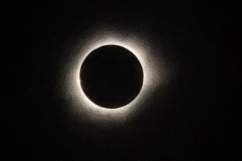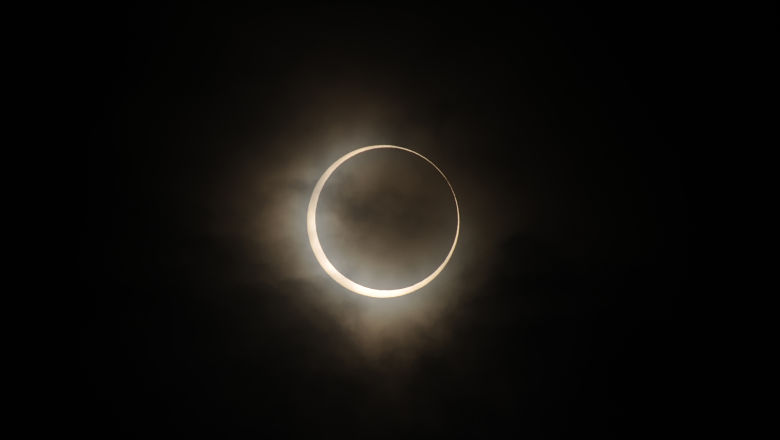
Solar eclipse 2017 is an extremely rare event. The last time there was a solar eclipse in the contiguous United States was in 1979. It’s being called the “Great American Eclipse.”
According to Time Magazine, the solar eclipse will occur on August 21, and the “total solar eclipse is unique in that it will be visible all across the U.S., with the moon appearing to completely blot out the sun in parts of 14 different states at different times throughout the day. That includes parts of Oregon, Idaho, Wyoming, Montana, Nebraska, Iowa Kansas, Missouri, Illinois, Kentucky, Tennessee, Georgia, and North and South Carolina.”
However, most people have heard about the potential risks. This has a lot of people wondering:
How dangerous is the solar eclipse, really? Are the purported dangers myth or fact?
The answer: The solar eclipse can be dangerous in some ways – at least to the eyesight – so it’s important to use proper safety precautions or you could end up with retinal damage. There is also what’s being called “solar eclipse selfie danger.”
NASA explains what will happen during the solar eclipse: “A solar eclipse occurs when the Moon blocks any part of the Sun. On Monday, August 21, 2017, a solar eclipse will be visible (weather permitting) across all of North America. The whole continent will experience a partial eclipse lasting 2 to 3 hours. Halfway through the event, anyone within a roughly 70-mile-wide path from Oregon to South Carolina will experience a brief total eclipse, when the Moon completely blocks the Sun’s bright face for up to 2 minutes 40 seconds, turning day into night and making visible the otherwise hidden solar corona — the Sun’s outer atmosphere —one of nature’s most awesome sights.”
Some schools are closing because of the potential dangers (namely, how to stop students from looking up).
Here are some of the risks from the solar eclipse 2017:
Eye Damage Potential
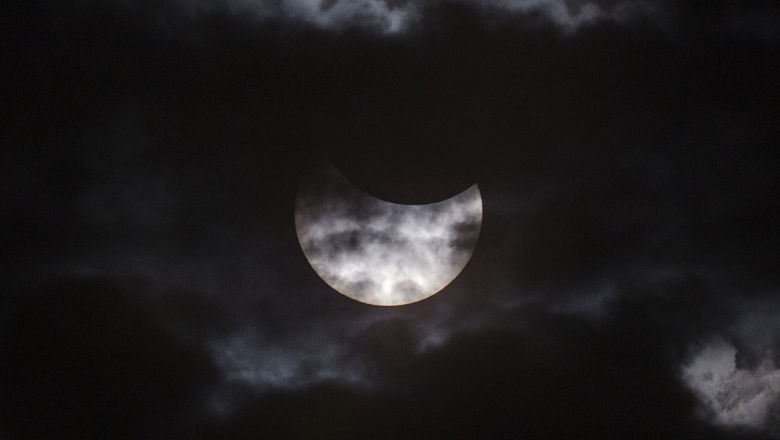
Getty
We liked the way Dr. Angela Speck, director of Astronomy at the University of Missouri, put it to ABC2, “The only thing that is at all dangerous about solar eclipse day is that on a normal day you know you shouldn’t look at the sun. And on this day, you want to.”
According to NASA, it is unsafe to look directly at a solar eclipse. “The only safe way to look directly at the uneclipsed or partially eclipsed Sun is through special-purpose solar filters, such as ‘eclipse glasses’ …or hand-held solar viewers,” NASA advises. “Homemade filters or ordinary sunglasses, even very dark ones, are not safe for looking at the Sun.”
It’s also important to make sure your solar eclipse glasses are certified. “To date four manufacturers have certified that their eclipse glasses and handheld solar viewers meet the ISO 12312-2 international standard for such products: Rainbow Symphony, American Paper Optics, Thousand Oaks Optical, and TSE17.”
It’s equally dangerous to look through a camera or other optical device without a filter.
It’s also important not to look at the eclipse without a filter on a camera, binoculars, telescope or through any other device, either.
NASA says it’s a misconception that you can go blind from looking at a solar eclipse, but there is the danger of retinal damage. “During a total solar eclipse when the disk of the moon fully covers the sun, the brilliant corona emits only electromagnetic radiation, though sometimes with a greenish hue,” NASA explains. “Scientists have studied this radiation for centuries. Being a million times fainter than the light from the sun itself, there is nothing in the coronal light that could cross 150 million kilometers of space, penetrate our dense atmosphere, and cause blindness. However, if you watched the sun before totality, you will catch a glimpse of the brilliant solar surface and this can cause retinal damage.”
“The only time you can look at the sun with your naked eye is A) if you’re in the path of totality, where the sun will be completely covered by the moon, and B) during those two minutes or less when the sun is completely covered,” CNN reported.
Here’s the science: “Exposing your naked eye-ball to sunlight causes solar retinopathy (aka photic retinopathy or solar retinitis), which involves two types of damage to the retina, particularly the fovea: burns and photochemical toxicity,” according to Ars Technica.
Ars Technica reported on a study of 45 people “who damaged their eyes during a 1999 eclipse in the UK” and said it “supports the idea that photochemical toxicity is a frequent cause of vision damage in solar retinopathy. In those cases, most of the damage was not permanent. Only four of the 45 reported lingering symptoms—discomfort and vision problems—after seven months.”
Solar Eclipse ‘Selfie Danger’
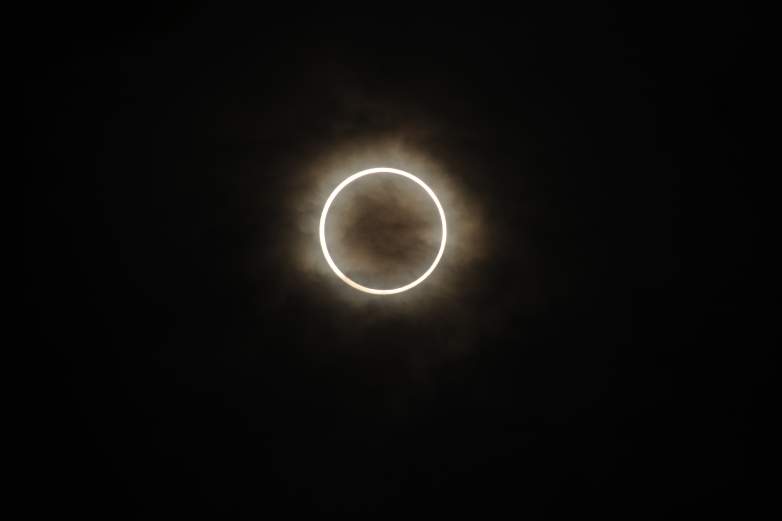
GettyAn annular solar eclipse viewed from Japan in 2012.
Is it dangerous to take selfies during a solar eclipse with an iPhone or other cell phone? Yes, reports the BBC.
“The College of Optometrists says the danger comes should people look directly at the Sun as they position themselves for selfies or other shots. Inadvertently glancing at the Sun – even briefly while setting up a shot – can lead to burns at the back of eye,” BBC reports. “Experts advise indirect viewing, using pinholes and facing away from the Sun.”
This danger is obviously related to the eyesight issues: You shouldn’t look directly at the sun or eclipse, including into an iPhone. Here’s the issue, says, Daniel Hardiman-McCartney, a clinical adviser at the College of Optometrists, to BBC: “In 1999, when there was the last major eclipse, no-one really had smartphones or took selfies. This could potentially be very dangerous because people might be tempted to look at the Sun as they try to get the perfect shot or clip. And as the eclipse is a relatively slow process, people might end up accidentally looking at the Sun for minutes.”
Is that a stretch? Better to be safe than sorry.
“Many people will think it’s safe to take a selfie with the eclipse in the background because they aren’t looking directly at the sun,” Tongalp Tezel, MD, a retina expert at Columbia University Medical Center, also said, according to a release from CUMC. “What they may not realize is that the screen of your phone reflects the ultraviolet rays emitted during an eclipse directly toward your eye, which can result in a solar burn.”
Driving
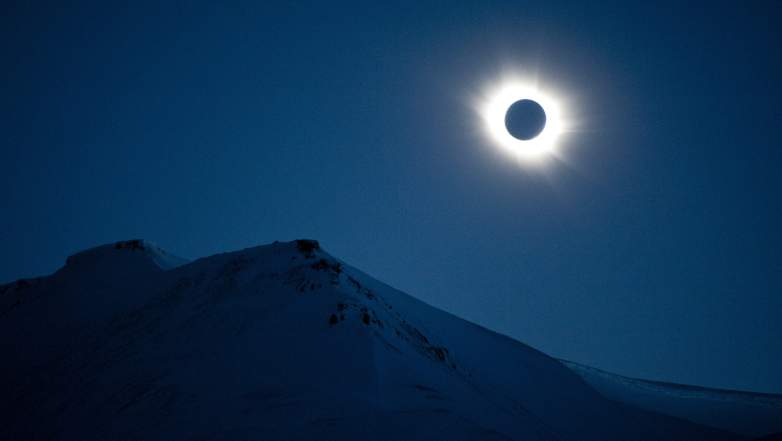
GettyA total solar eclipse can be seen in Svalbard, Longyearbyen, Norway, on March 20, 2015.
It’s not a great idea to drive during a solar eclipse. That’s because of human behavior, not science. Distracted drivers make for dangerous drivers, and pedestrians may be wandering around. Traffic congestion can increase dangers. “Prepare for extra congestion on the roads during the eclipse period, but also in the days before and after the eclipse as many travelers head to the totality zone,” reports AAA. Don’t drive while wearing solar eclipse glasses, and put your visor down, if you must drive. Turn your headlights on. Avoid driving if you can.
Pregnancy
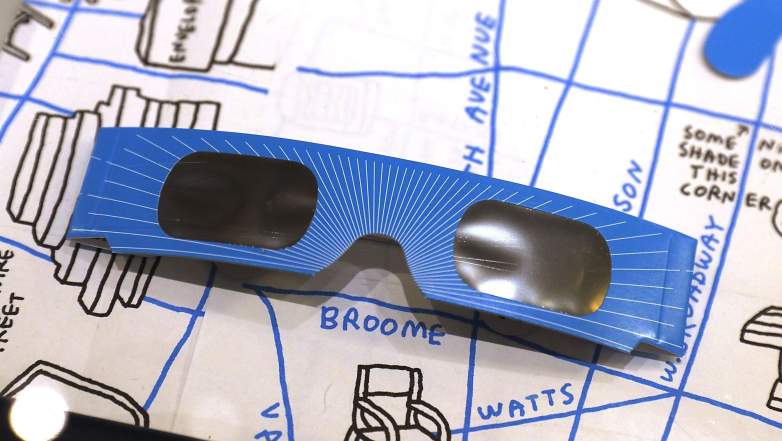
GettyA pair of free solar eclipse glasses sit on display at a Warby Parker store on August 11 in New York City.
Some cultures have historically believed that it’s dangerous for pregnant women to look at a solar eclipse. However, according to NASA, this is a misconception.
“This is related to the previous false idea that harmful radiations are emitted during a total solar eclipse. Although the electromagnetic radiation from the corona, seen as light, is perfectly safe, there is another form of radiation that travels to Earth from the sun,” NASA explains.
“Deep in the solar interior where nuclear fusion takes place to light the sun, particles called neutrinos are born, and zip unimpeded out of the sun and into space. They also pass through the solid body of the moon during the eclipse and a second or so later reach Earth and pass through it too! Every second, your body is pelted by trillions of these neutrinos no matter if the sun is above or below the horizon. The only consequence is that every few minutes a few atoms in your body are transmuted into a different isotope by absorbing a neutrino. This is an entirely harmless effect and would not harm you, or if you are pregnant, the developing fetus.”
End of the World Prophecies

Getty
Some cultures thought solar eclipses meant bad things were coming. There are even end of the world prophecies associated with the solar eclipse.
According to UK Express, some religions consider the “Black Moon” to be a bad omen.
“Many fundamentalist Christians see this as a significant warning of the impending apocalypse, the second coming of Christ and the rapture,” the site reported. According to UK Express, Pastor Paul Begley, host of the Coming Apocalypse radio show, “said the eclipse could possibly fulfil a prophecy recorded in the book of Joel,” which says, “The sun shall be turned to darkness before the Day of the Lord come.”
“We are living in the last days,” he added, according to UK Express. UK Daily Star also noted, “The Old Testament book of Isaiah says the ‘stars in heaven…will not show their light, the Sun will be darkened and the Moon will not give its light,’ before the Second Coming. God’s ‘fierce anger’ will destroy the Earth, leaving the land ‘desolate.'” UK Daily Star reports that some who believe this prophecy are pointing to tensions between the United States and North Korea as a possible trigger for the eventual End of the World.
End of the world prophecies tied to a solar eclipse are also found in other religious belief systems. Susan Milbrath, a curator at the Florida Museum of Natural History, told The New York Times, “The Ch’orti’, indigenous Mayas, believed “an eclipse of the sun that lasts more than a day will bring the end of the world, and the spirits of the dead will come to life and eat those on earth.”
According to UK Telegraph, modern-day conspiracy theorists “are claiming that a planet will collide with Earth this September – and that the coming solar eclipse will signal the apocalypse’s beginning.” They think the planet is called Nibiru or Planet X. The date of doom? September 23, 2017.
However, Eclipse2017.org argues that everyone needs to chill out. “Could an eclipse possibly spell doom for all time?” the site asks, and then answers the question this way:
“In a word – no. There is no danger at all to the Earth from solar rays, cosmic cataclysms, volcanic or tectonic eruptions, or any other eclipse-induced phenomenon that any self-anointed ‘authority’ writes a book about. Eclipses have been happening on earth for a VERY long time, and we’re all magically still here. The world didn’t end during the total eclipses of 2008, 2009, 2010, 2012, 2013, 2015, or 2016. And there simply isn’t any chance that the 2017 eclipse will be any different from any of its predecessors: Cool to observe, and that’s about it.”
